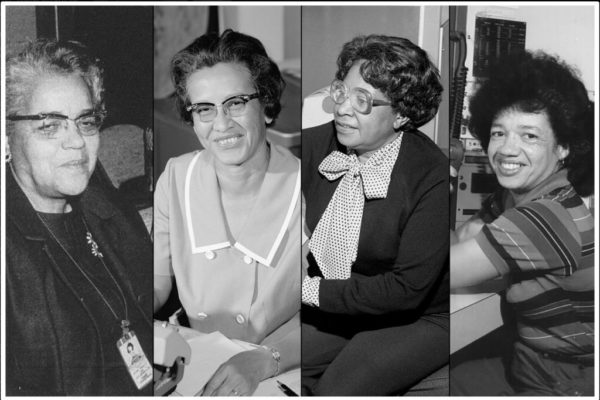Three Black women portrayed in the 2016 film “Hidden Figures” and a fourth not depicted in the movie will receive Congressional Gold Medals decades after their work help make the U.S. space program what it is today.
President Donald Trump signed into law the Hidden Figures Congressional Gold Medal Act Friday honoring Mary Jackson, Katherine Johnson, Dorothy Vaughan and Christine Darden.
Jackson, Johnson and Vaughn were played by actresses Janelle Monáe, Taraji P. Henson and Octavia Spencer in the movie, and the former NASA employees’ work helped send the first American into orbit in 1962.

Darden, who began her career in aeronautics with NASA, became a data analyst at NASA’s Langley Research Center in 1967 and went on to be promoted to aerospace engineer in 1973.
Her work resulted in the production of low-boom sonic effects, which revolutionized aerodynamics design, according to the legislation.
The women, all mathematical whizzes in their own right, contributed to NASA’s success during the space race between Cold War rivals the Soviet Union and the United States.
“I’m thrilled they’ve received this recognition,” Sen. Kamala Harris tweeted Nov. 4.
Vaughan and Jackson will receive their honors posthumously, according to the legislation.
Jackson joined NASA in 1951 and went on to become the agency’s first Black female engineer, and Vaughan joined in 1943 and went on to become NASA’s first Black supervisor, a position she held for nine years and became an expert programmer, according to the legislation.
Vaughan retired from NASA in 1971 and died on November 10, 2008, and Jackson retired from NASA in 1985 and died in 2005.
Johnson, 101, retired from NASA in 1986, according to NASA.
She began her career in aeronautics as a computer in the segregated West Area Computing unit of what would later become NASA in 1953.
There, she analyzed data from flight tests and calculated the trajectory for Alan Shepard’s Freedom 7 mission in 1961, which was the first human spaceflight by an American.
Johnson was also asked to verify the calculations when electronic computers at NASA were used to calculate the orbit for astronaut John Glenn’s Friendship 7 mission and for missions including the Apollo missions.
Women at NASA, a program to encourage young women and girls to learn about STEM, invited the public to “celebrate the women who paved the way @Nasa” in a tweet Friday, and it garnered several responses highlighting the women’s contributions.
“This was a giant step for women in science 👏🏻and well deserved, they are an inspiration for us all♥️” @nikkie42 tweeted.
“At long last. These brave talented #HiddenFigures deserve all the recognition they receive 👏,”@TeriRawada tweeted.
“I love this!!! Congratulations pioneers!!!” @missywadestone tweeted.


